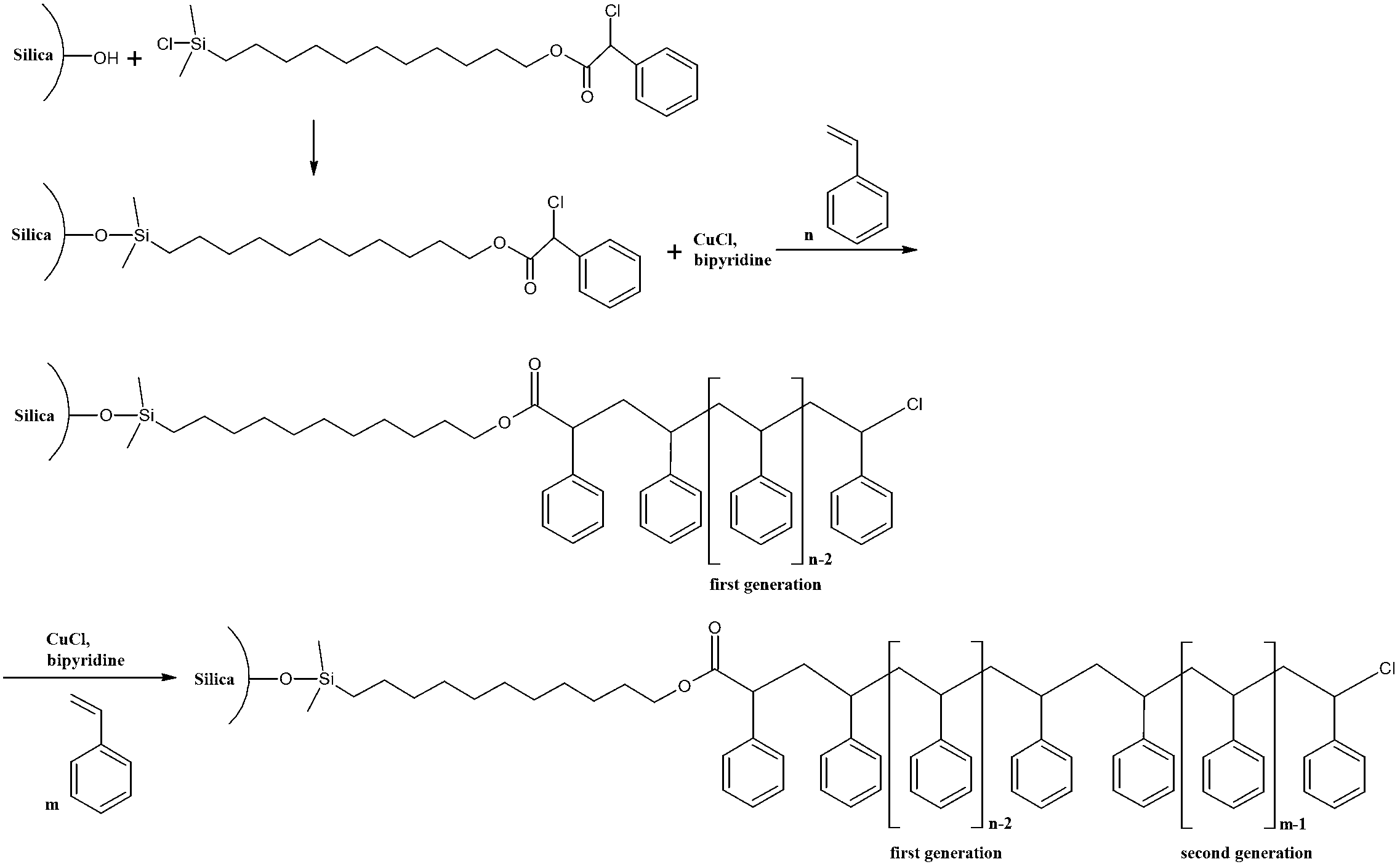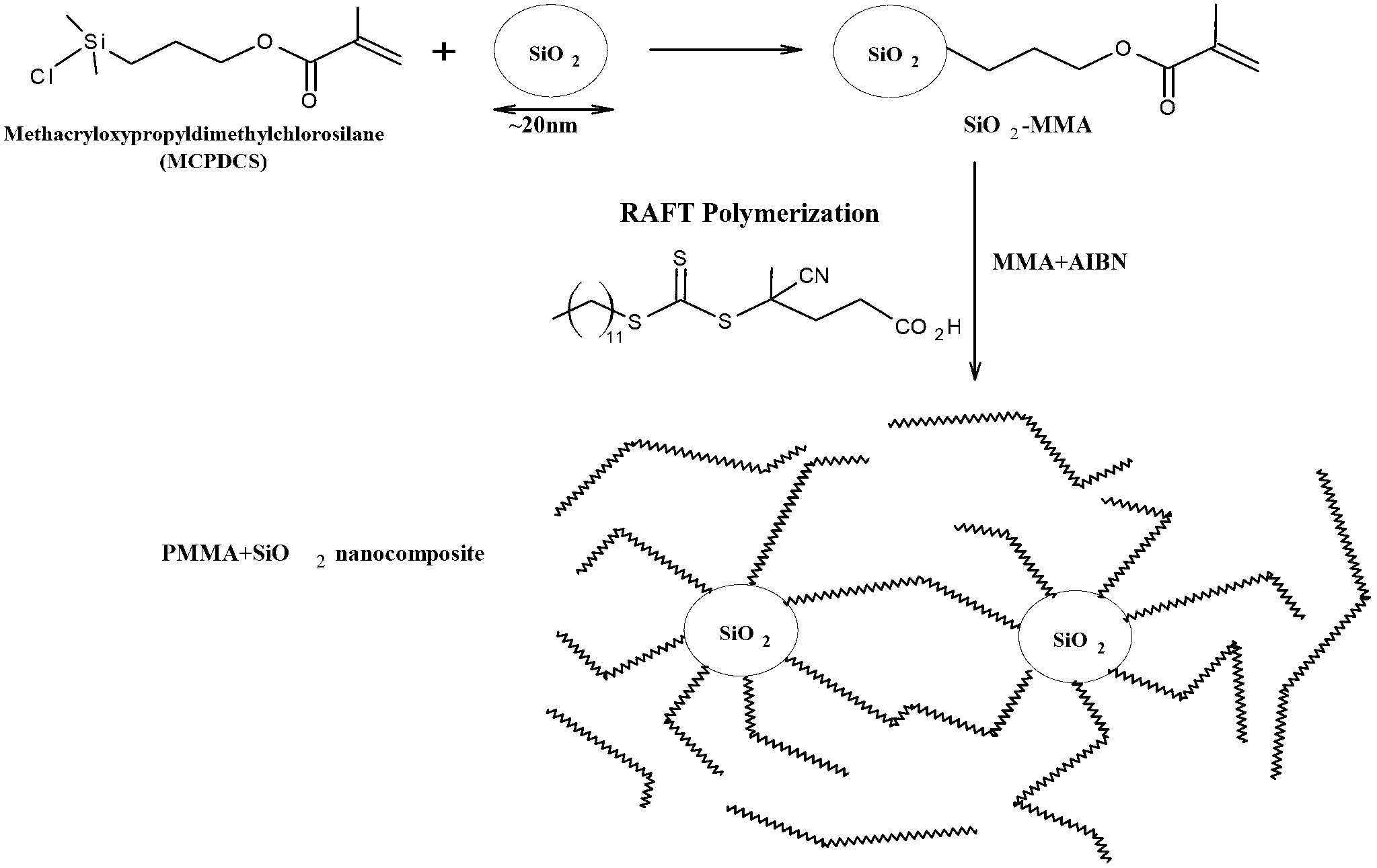Method for initiating graft polymer through ultraviolet induction on surface of glass
A technology for grafting polymers and glass surfaces, which is applied in the field of UV-induced redox-induced free radical polymerization and glass surface grafting, can solve problems such as heavy pollution, complex processes, and difficult industrialized production, and achieves less environmental pollution and operation technology. Simple, easy-to-obtain results
- Summary
- Abstract
- Description
- Claims
- Application Information
AI Technical Summary
Problems solved by technology
Method used
Image
Examples
Embodiment 1
[0049] Disperse 0.05g of benzophenone and 1g of DMAAm in 10g of acetone to make a reaction solution, then evenly coat the reaction solution on the surface of the glass sheet treated by the method of step (1), and put it into a UV curing machine After irradiating for 3 minutes, a glass sheet sample with PDMAAm grafted on the surface was prepared. In step (1), the mass percent concentration of KH-550 in the PAAm aqueous solution is 1%, and the mass percent concentration in the PAAm aqueous solution is 0.05%. analyzed by infrared spectroscopy, the Figure 11 It can be seen that at 2930cm -1 、1610cm -1 and 1400cm -1 Appears Nearby - CH 3 , C=O and C-N characteristic peaks, indicating that PDMAAm has been successfully grafted onto nano-SiO 2 superior. Depend on Figure 12 It can be seen that the contact angle between the surface of the glass sheet sample grafted with PDMAAm and water is 78.14°. The measured mass of the glass sheet before the reaction was 0.7865g, the mass o...
Embodiment 2
[0051] Disperse 0.05g of benzophenone and 1g of AAm in 10g of acetone to make a reaction solution, then evenly coat the reaction solution on the surface of the glass sheet treated by the method of step (1), and put it into a UV curing machine After irradiating for 3 minutes, a glass sheet sample with PAAm grafted on the surface was prepared. In step (1), the mass percent concentration of KH-550 in the PAAm aqueous solution is 2%, and the mass percent concentration in the PAAm aqueous solution is 0.1%. analyzed by infrared spectroscopy, the Figure 13 It can be seen that at 1650cm -1 and 1450cm -1 The characteristic peaks of C=O and C-N appear nearby, indicating that PAAm has been successfully grafted onto nano-SiO 2 superior. Depend on Figure 14 It can be seen that the contact angle between the surface of the glass sheet sample grafted with PAAm and water is 55.78°. The mass of the glass sheet before the reaction was 0.8025g, the mass of the glass sheet after the reacti...
Embodiment 3
[0053] Disperse 0.05g of benzophenone and 1g of DMAPS in 10g of acetone / water mixed solution to make a reaction solution, and then apply the reaction solution evenly on the surface of the glass sheet treated by the method of step (1), and put it into the ultraviolet Irradiate in a light curing machine for 3 minutes to prepare a glass sheet sample grafted with PDMAPS on the surface. In step (1), the mass percent concentration of KH-550 in the PAAm aqueous solution is 3%, and the mass percent concentration in the PAAm aqueous solution is 0.15%. analyzed by infrared spectroscopy, the Figure 15 It can be seen that at 1720cm -1 and 1480cm -1 The characteristic peaks of C=O and ammonium ions on the ester group appear nearby, indicating that PDMAPS has been successfully grafted onto nano-SiO 2 superior. Depend on Figure 16 It can be seen that the contact angle between the surface of the glass sheet sample grafted with PDMAPS and water is 45.87°. It is measured that the mass o...
PUM
 Login to View More
Login to View More Abstract
Description
Claims
Application Information
 Login to View More
Login to View More - R&D
- Intellectual Property
- Life Sciences
- Materials
- Tech Scout
- Unparalleled Data Quality
- Higher Quality Content
- 60% Fewer Hallucinations
Browse by: Latest US Patents, China's latest patents, Technical Efficacy Thesaurus, Application Domain, Technology Topic, Popular Technical Reports.
© 2025 PatSnap. All rights reserved.Legal|Privacy policy|Modern Slavery Act Transparency Statement|Sitemap|About US| Contact US: help@patsnap.com



